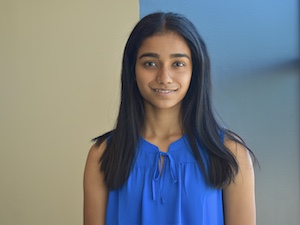2022 Week 1: Environment, Sustainability & Community Health
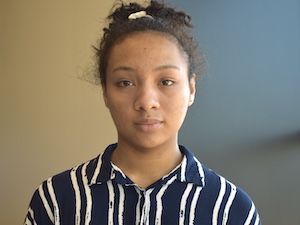 Angelica Brooks | Farm Alliance of Baltimore
Angelica Brooks | Farm Alliance of Baltimore
Throughout my first week at the Farm Alliance of Baltimore, my supervisor and I spoke about the removal of an urban garden near my neighborhood. I asked my supervisor why the Cherry Hill Urban Garden was demolished so quickly, and she told me that the members of the garden were evicted from what was actually the city’s property. Later in the week, my supervisor and I were driving back from a storage space behind a market where we sorted produce for the weekend’s farmer’s market. I noticed a large area of land near MICA’s campus that was not being used; again, my supervisor explained to me that the space was also demolished by the city. The space used to hold grocery stores, and was a general area for the neighborhood’s community to come together. She explained that there had been concerns of crime in that particular area. These discussions with my supervisor caused a lot of reflection about the issue of land ownership in Baltimore city. In the city, a good number of citizens are low-income and do not even own their house, let alone a shared piece of land. Historically, minority groups were especially disenfranchised, which made it harder to accumulate wealth through land ownership. It is especially challenging to acquire land when city and state powers continue to disinvest in neighborhoods inhabited by minorities. Currently, organizations like the Black Yield Institute and the Farm Alliance are working to emphasize community owned land, as owning land can be one of the strongest ways to retain power. I hope to further highlight this issue during my internship by offering any support I can to my worksite’s initiatives, as well as advocating for more community owned spaces. Safe and healthy spaces are necessary for communities to feel protected and it enables them to properly thrive.
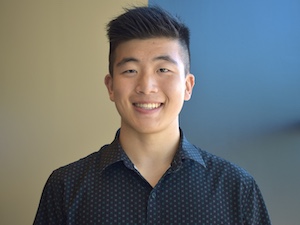 Jeremy Gu | Baltimore SquashWise
Jeremy Gu | Baltimore SquashWise
Squashwise is an interesting organization that combines the game of squash with education and college readiness. That was an interesting combo to me since squash is such a low participation sport, I wondered why they paired specifically the game of squash with college readiness. And it dawned on me, that this was the reason. Squash in the US has been a white, upper class sport only found in country clubs and high membership gym areas that have barred many people from playing the sport. This is the reason why squash has such a low youth involvement rate. However, within the last 15 years, a Squash and Education Alliance formed and has started a Community Squash Movement that is aimed at opening the doors for the whole community to play squash and receive exposure to the sport. They also help the youth by pairing this extra opportunity of an extracurricular with academics and college readiness programming.
In Baltimore city, the only club that has Squash courts right now is the Maryland Club which boasts a hefty 1500$ membership fee each month, completely shutting out most of the population here in the city. With no surprise, it’s located in the white L and predominantly serves white L residents or incoming visitors. There are no public facilities since the shut down of Meadowmill. This really hurts the Baltimore community as Squash has also just recently seen an uptick of players due to the adoption of squash in the public school system less than a decade ago: arguably due to Squashwise’s partnership with the local middle school.
The good news – Squashwise has just purchased an old Greyhound building and is on track to invest over 11 million to renovate it into a new Squash and Teaching facility that will be open to the public and open in the next few years. In the capital investment packet, I saw a graphic showing where the squashwise facility is and where the communities that have already demonstrated interest in going to the facility are. The dots perfectly traced out the white L and filled the black butterfly. It’s a bit sad to me to see this play out time and time again, but I do have hopes that even though the squash community is small now and they will only be able to take advantage of this facility in the next few years, that these small steps will slowly start making a large difference.
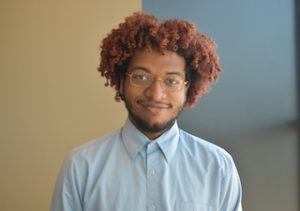 Brahein Richardson | Black Church Food Security Network
Brahein Richardson | Black Church Food Security Network
With week 1 over, I am excited to reflect and hopefully discover something I had not realized in the moment. I am happy week 1 is over and I finally have my footing down for my placement, at least it is starting to feel that way. I went into week 1 very nervous, terrified, and anxious, but at the same time I tried my best to tell myself that everything would work itself out and that it would all be okay by Friday evening. I woke up every morning, thinking about the day before and knowing I was doing all I could at the time to put my best foot forward. With every day that passed, I began to slowly let go of the breath I was holding since Day 1, and each day was a new day conquered. I have absolutely no idea how the pairing process is truly executed, but in all honesty I think the Black Church Food Security Network was meant for me this summer. Working alongside my site supervisor has been such a heartwarming and motivating experience. I do not think she fully understands how impactful all of her words have been, especially since like I said…I have been feeling too many feelings at the same time. I am so grateful and appreciative of her support, because although the day-to-day work focuses on how I as an intern can be of service to the organization, I can absolutely feel the genuineness of her words when she encourages me and makes it known that herself and the organization all support me and want me to excel and feel as stress free as possible. She cares about me and wants me to have fun this summer, and that will mean more to me than anyone really knows. Going into week 2, I am of course still nervous, scared, and anxious, not as much as before or with the same intensity, however my hope is that each day and each week I will be able to continually breathe out and release all of the aforementioned negative feelings.
This week I began learning more about the work that MissionFit does and what exactly Strength Ambassadors, the program that I’ll be assisting with this summer, entails. This week mostly consisted of meetings with my supervisor to discuss and plan out the specific projects that I’ll be working on for the remainder of the summer until Strength Ambassadors starts in July. My main focus, for now, is writing out the curriculum for the Strength Ambassadors program and producing a concise, easy-to-follow manual outlining all of the program’s activities. The idea is that this written curriculum will inform other coaches how to run Strength Ambassadors or perhaps even guide others in replicating a similar sort of program in other locations. Currently, my supervisor Wes is pretty much the only one who knows all the details about this program since he has run it for the last 3 years. Hence, most of our meetings this week consisted of me picking his brain and starting to get all the content I need to translate this curriculum (which currently only exists in his mind) into a written format. This has definitely been an interesting process, involving a lot of online research to fill in the gaps in my knowledge and nitpicking when it comes to the language I use to describe how to correctly coach certain movements (like performing a dead bug).
For me, I think the coolest part so far has been seeing and learning how a real-life public health program functions to achieve its specific public health goal. So far what I have learned in some of my public health classes has felt vague and in a sense, very theoretical. For instance, while learning about topics like the Socio-Ecological Model, I often found myself wondering “Ok, but how does this translate to the real world? How are these concepts related to the day-to-day work and program planning of grassroots public health efforts?” My supervisor is a grad student at the Hopkins school of public health, and he has been explaining to me some of the concepts that are taught in graduate PH courses that are relevant to MissionFit’s work and mission. For instance, the introductory part of the curriculum book that I am responsible for will contain a logic model and theory of change. A logic model is a simple map or diagram depicting what an organization does, why they do it, what they hope to achieve, how they plan to achieve it, and perhaps most importantly, how they will measure achievement (i.e. demonstrate that their program is doing /has done what they said it would do). I am currently working on a logic model for the Strength Ambassadors program, detailing the inputs, activities, outputs, and outcomes of said program. The theory of change model that I’m working on is another simple flow diagram demonstrating how the given intervention (the Strength Ambassadors program) will lead to a series of changes that will ultimately result in the intended impact of the program (improved health and health literacy of Baltimore youth). Overall, I’m really excited to continue learning and applying public health concepts in real-time.
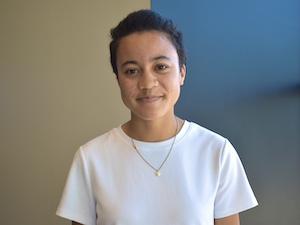 Marisa Thomas | Whitelock Community Farm
Marisa Thomas | Whitelock Community Farm
This first week at Whitelock, I dove into the Baltimore agriculture scene through farm tours and farm chores. I jumped in early last Saturday, June 11th, to take a tour of some other farms in Baltimore. We visited Strength to Love 2, Bliss Meadows, the Greener Garden, and closed at the ribbon cutting ceremony of the Harlem Park Community Farm. It was really interesting to see the diversity of setups, hear about the timelines of operation, and meet owners of the different farms. It was also interesting to hear about the experiences of the farmers and their struggles. One farmer who has decades of experience talked about how she’s seen the impact of climate change on her crops while another stressed the importance of educating youth in farming practices, especially as a way to increase Black food sovereignty.
Something that stuck out to me this week was food sovereignty and its connection to land access (which is a great tie back to the BITES presentation of week 1!). As we discussed in the BITES session, one part of food sovereignty stresses that people have the right to healthy, culturally appropriate food that is produced sustainably. In Baltimore, community farms are a step toward food sovereignty, especially in communities that are affected by food apartheid.
My site supervisor, Ms. Kim, emphasized the role of reliable land access in food production. On a Tuesday visit to Oliver Community Farm and the Johnston Farm, we asked questions on a produce safety checklist for the Farm Alliance. One of the questions was about how the farmers gained access to the land. They said they used Adopt-A-Lot. Many Baltimore farmers use the Adopt-A-Lot system, and it allows them to be responsible for the vacant lots in Baltimore and use them for community benefit without ownership. It’s been very important for the creation of community gardens and farms, but since the Adopt-A-Lot system does not grant ownership of the land to the farmers, the land is at risk of being bought by developers and taken away. Some of the farms work to get ownership of the lots after a few years of operation (including Whitelock), but Ms. Kim also told me in the past few years other farms have been lost to developers. Land ownership is an important factor of food sovereignty, and the question of who actually “owns” the land is important to consider. As we discussed in our land acknowledgement on the first day of orientation, we are living on indigenous lands that are stolen. The issue of reliable land access for farms is another example of how systemic efforts that intentionally stole resources continue to affect the health and well-being of marginalized communities, especially Black and Indigenous people.
A focus on profits for a few at the expense of the health of many is still ongoing in Baltimore. Also ongoing are efforts working towards food sovereignty, and I’m happy I was able to take an active part in that work in the weeding, planting, watering, and many other tasks this past week.

